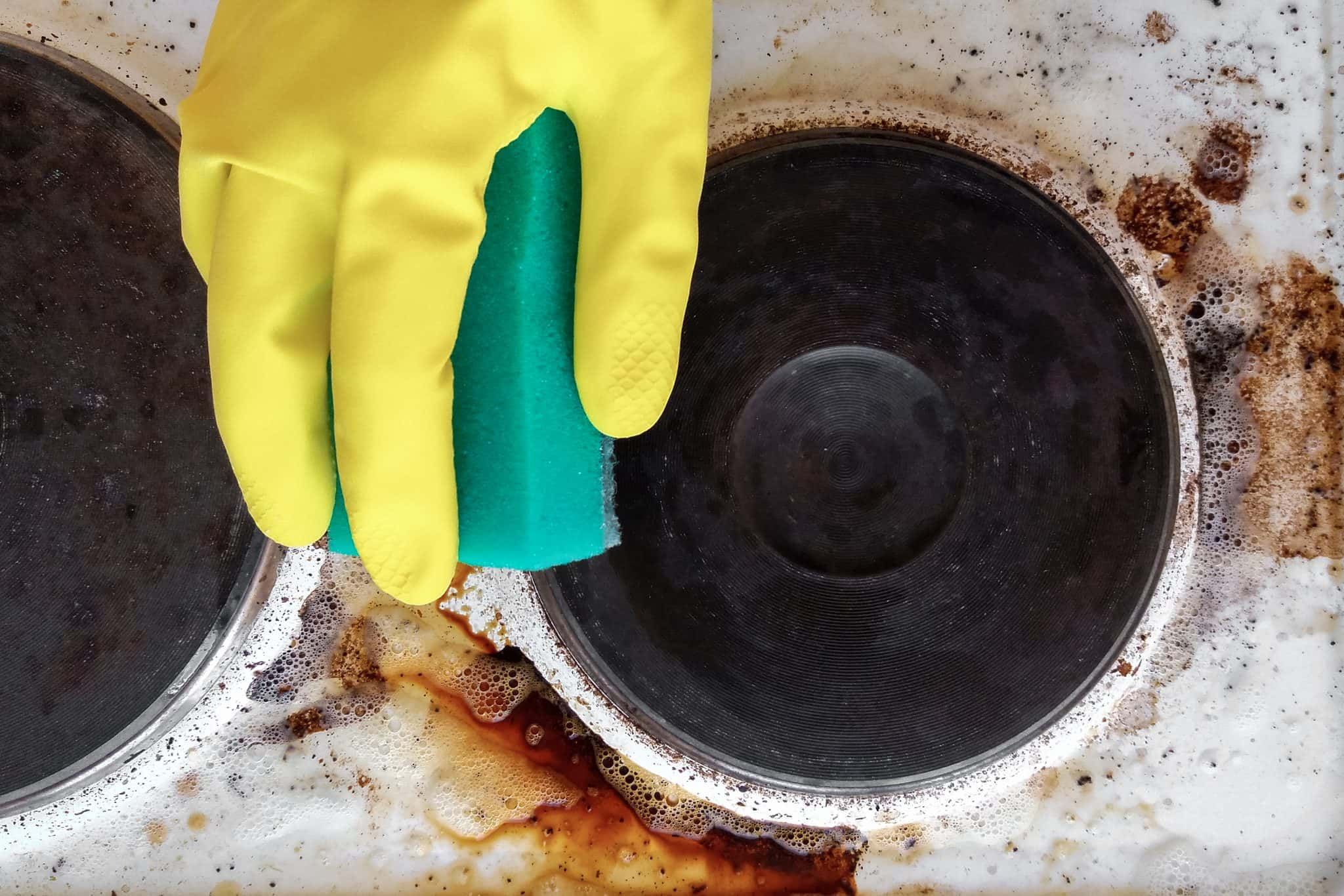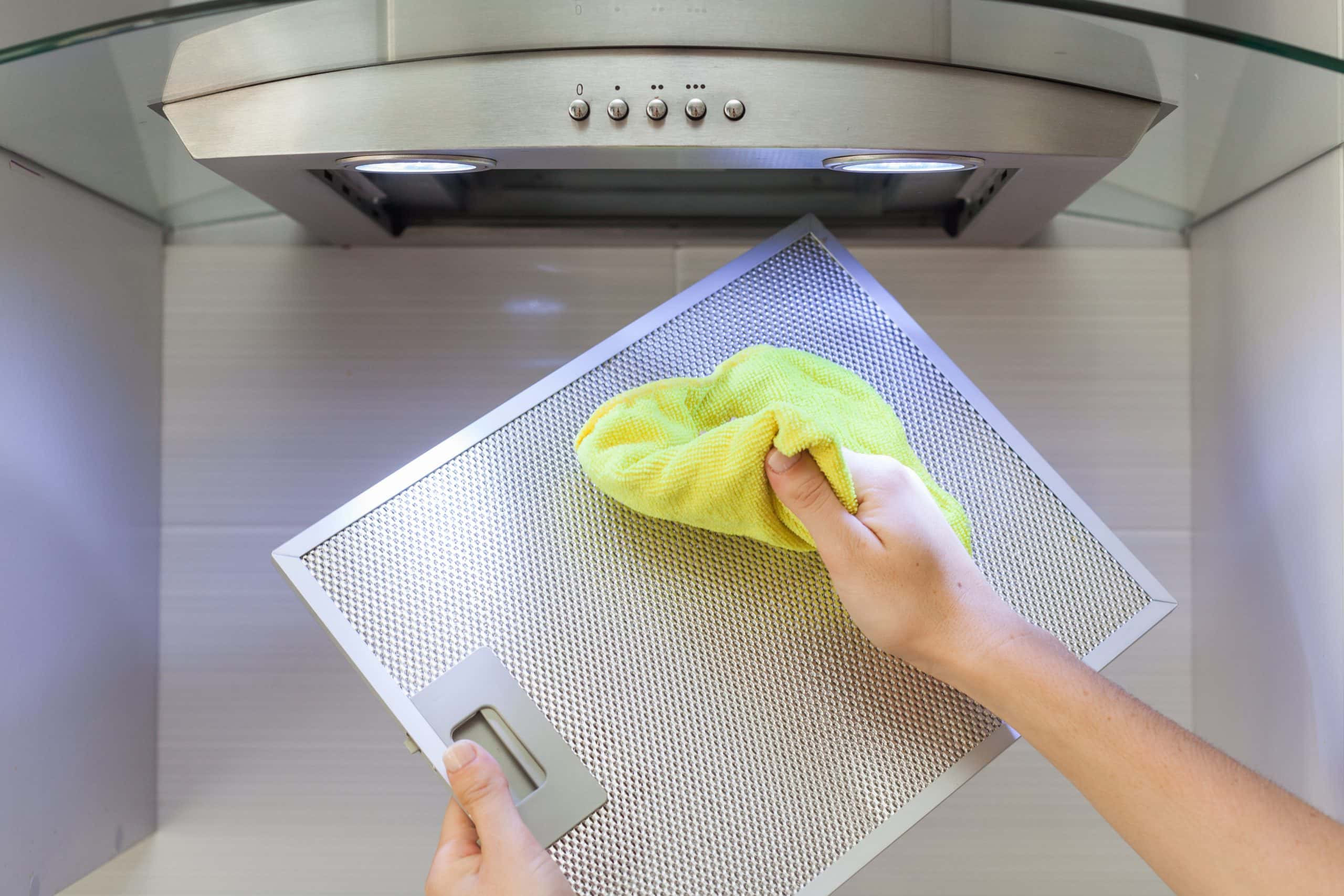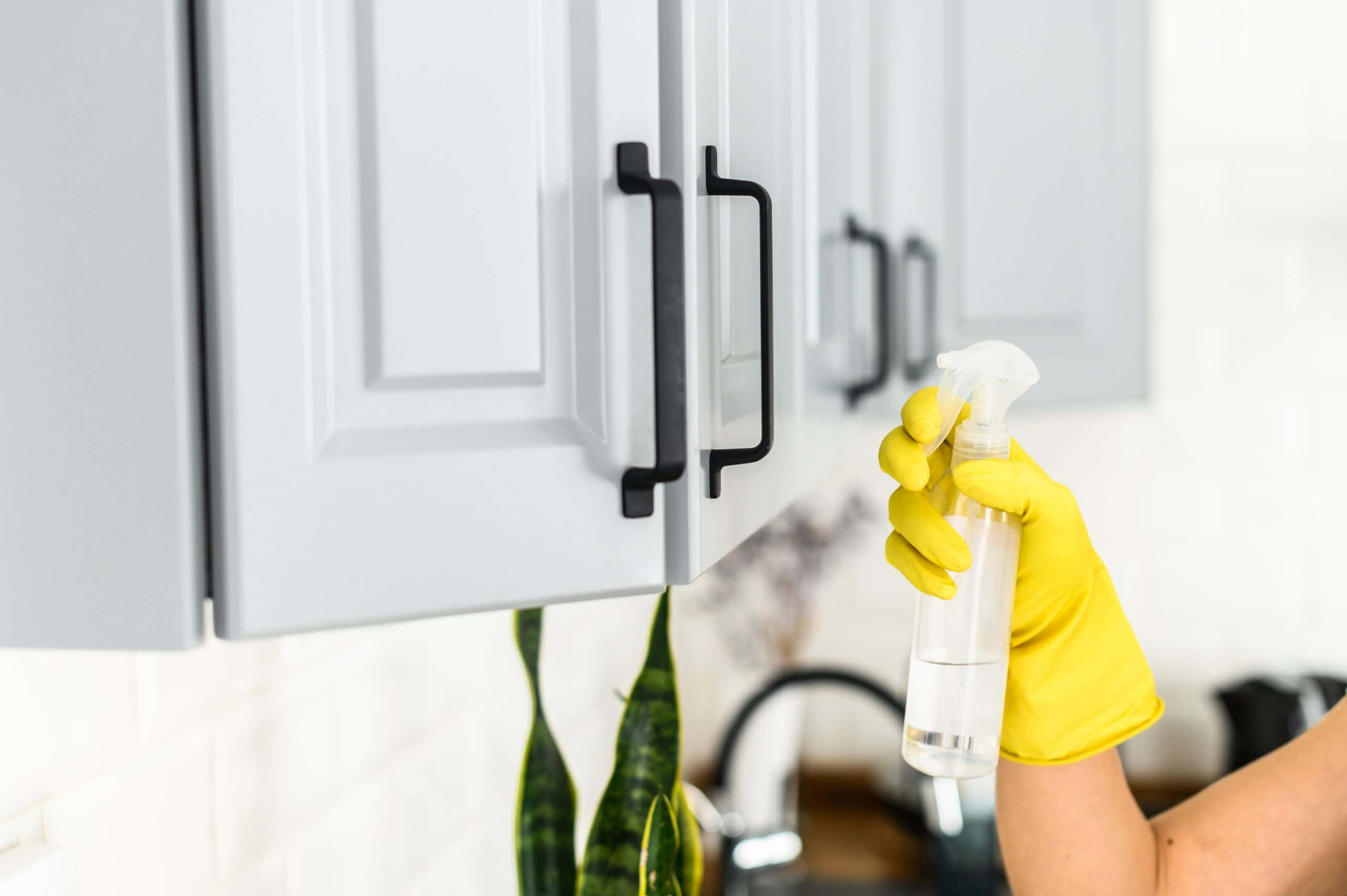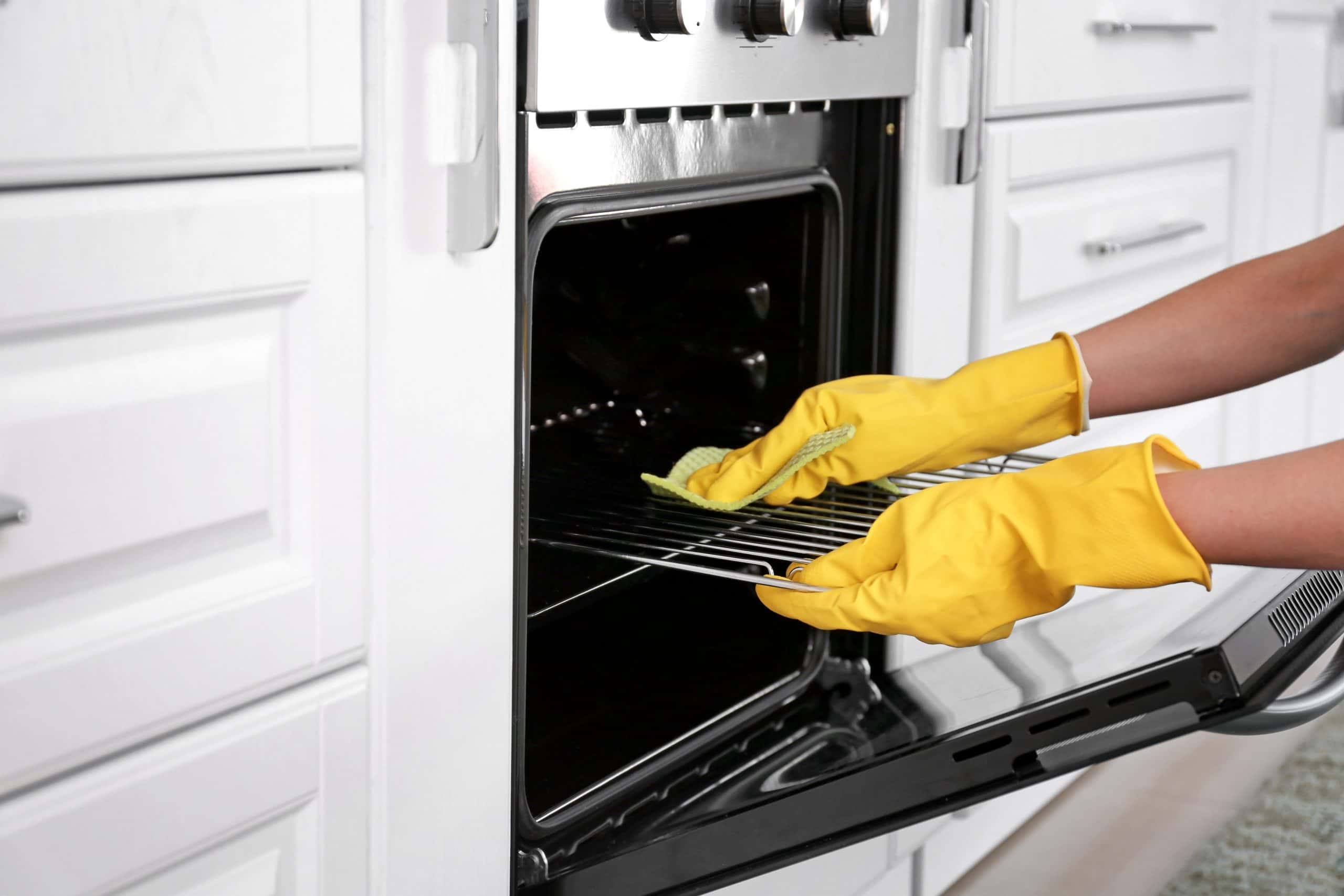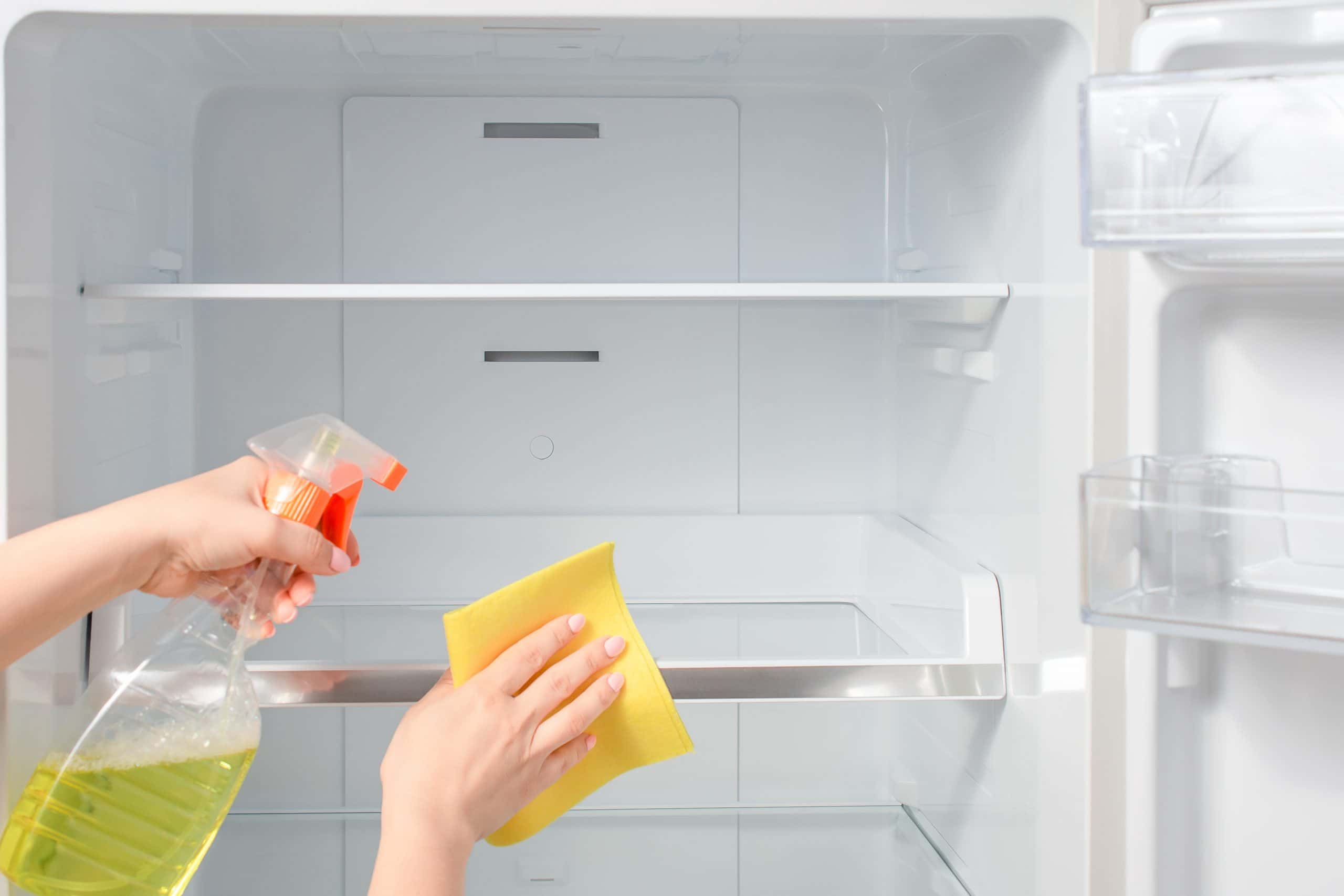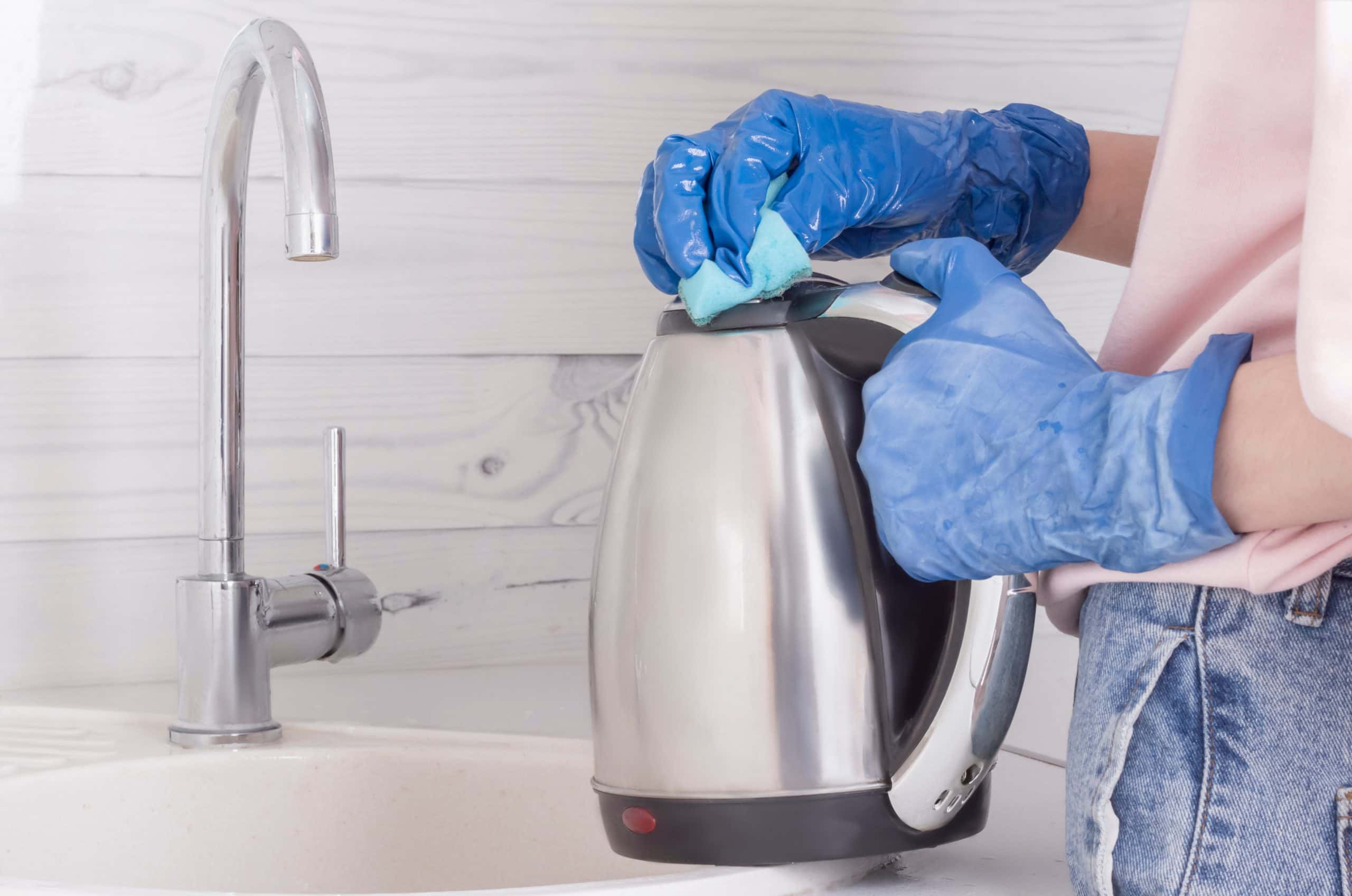A dirty kitchen is hugely demotivating. It makes you want to cook less and less, and pushes you towards an unhealthy lifestyle. Additionally, if you fail to deep clean your kitchen every few months, it turns into a playground for bacteria and harmful microorganisms.
You do not need an expert to clean your kitchen. The process is a lot simpler if done every few months. Experts recommend that the home kitchen must be deep cleaned at least once every two or three months based on usage.
We have broken down some excellent deep cleaning kitchen tips into multiple sections to help you apply them.
Here Is What You Need
Before we dive into deep cleaning kitchen tips and processes, here is a list of a few items you would need.
- Surface cleaner spray (Eg: Mr. Muscle spray)
- Limescale remover (Eg: Cif Cleaner or Lysol Kitchen Power Cleaner)
- Disinfectant wet wipes (Eg: Savlon Wipes)
- Microfibre cloth (To avoid scratching of the surface)
- White vinegar, lemons/limes, baking soda (optional)
- Dishwashing liquid soap.
- Step-ladder/Stool
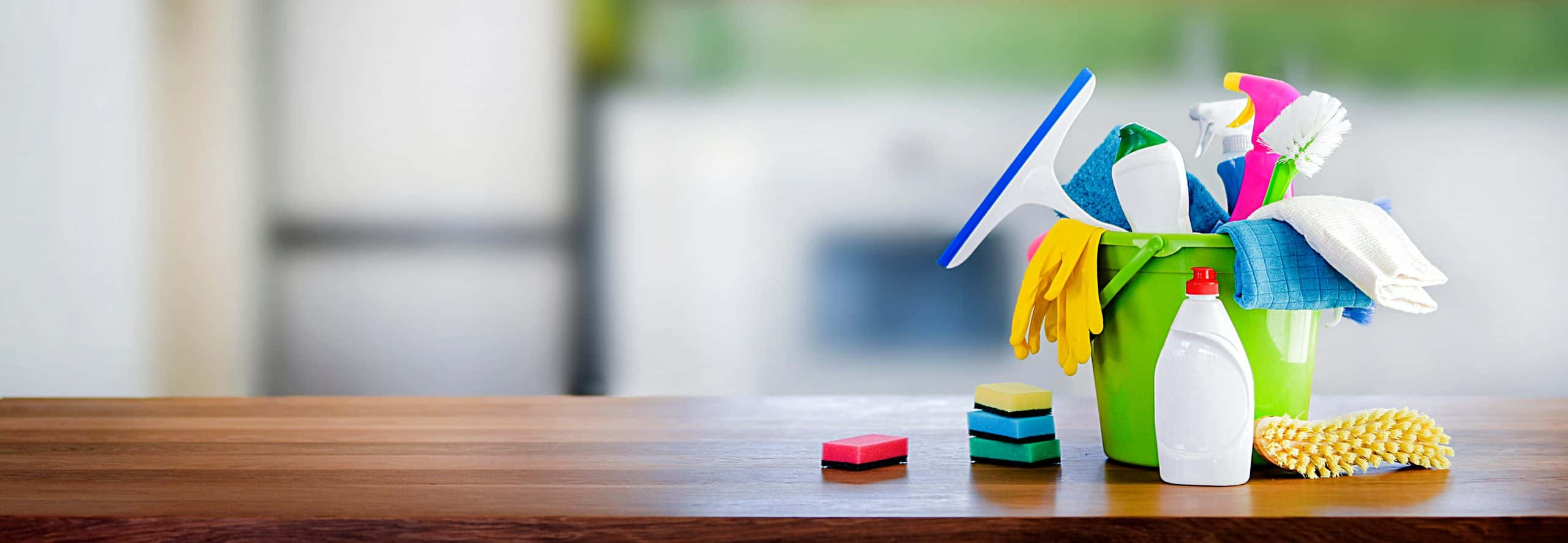
Start with Cabinets and Shelves
If you are familiar with cleaning practices, you will know that it’s better to start with the far-to-reach places before any other surface. This golden rule remains the same for kitchen deep cleaning.
Start by removing any edibles from the cabinets. This will prevent contamination of foods with cleaning chemicals.
Wipe Inside:
Use a disinfectant wipe and a cloth to clean the inside surface of the drawers, cabinets, and shelves. Use a microfibre cloth for the metallic fittings. If the frames are not eye-level, use a step-ladder or firm footstool to reach each corner.
Ensure you remove all debris with a dry cloth once before you spray inside. Once done, keep the doors of the shelves and cabinets open to dry. If left damp, it could lead to further bacteria formation.
Scrub Outside:
The next step is to use a cleaning chemical, wood-cleaners, or any other appropriate chemical to wipe the surfaces of the shelves and cabinets from the outside. During this time, pay attention to stains and marks on the surface.
Don’t forget to check the underside of the shelves for spills and oil stains. If they are stubborn stains, try using a few chemical surface cleaners or nail-polish remover. Be sure to wipe it clean thoroughly if you use any different solvents.
Use the time also to shine the handles as they become particularly greasy from constant use.
Cleaning the Equipment
Next, focus on cleaning all the apparatus you use in the kitchen. These deep-cleaning kitchen tips should help you.
Microwave Oven
The inside of your oven is tough to manage; here is how you can make it spotless.
There are two ways to clean your oven. The first is by using an industry-grade microwave cleaner. If you do not wish to invest in an additional product, you can use your everyday limescale cleaner for the kitchen. Do not spray them on the machine—spray them on the cloth and apply pressure when you wipe.
Lastly, place a bowl of water with a cut lime or lemon in it. Turn your microwave to a high-temperature setting and run it for three minutes. Once the inside of the machine steams up, wipe it dry. This trick will eliminate any foul odour in your device.
The exact process also works for an oven or OTG. Wash the trays using dish soap later.
Fridge and Freezer
Unplug and empty your fridge. It’s a good idea to deep clean your kitchen when your fridge is relatively empty; pick the right time of the month.
Use this opportunity to throw away any food that is past its expiry date or has remained unused for many months. Clean the surface with a dry cloth, then wet wipes. Next, use a mild-solvent or anti-bacterial spray to wipe the walls with a microfibre cloth.
Place all the shelves in a large tub of warm soapy water. Clean them with utensil soap. The warm water will help kill any tough microorganisms.
Water Kettle
Since the surface of your kettle is used to boil water for consumption, it’s unwise to use any chemicals while cleaning it. To descale and restore your kettle, use these deep cleaning kitchen tips.
Start by mixing a few tablespoons of white vinegar and a slice of lime in filtered water. Pour it into the kettle and let the water come to a boil. Repeat if needed. This concoction will remove all salt stains from the inside surface. Next, wash them with dishwashing soap and a scrubber.
Place the remaining lime slice with some more filtered water into the kettle and boil again. Discard this water before first use.
Lastly, the Surfaces
Start the last part of your kitchen deep cleaning by scrubbing the stovetop. If you use an electric stove, then unplug it first. Use a solution of baking soda or a limescale remover to wipe away any oil stains.
If they contain any detachable tops, soak them in warm water and clean them with dishwashing liquid.
To clean your countertop using the following methods:
- For marble or granite countertops, use a disinfectant spray. Ensure you wipe them with a warm water sponge after removing any residues.
- In the case of a stainless steel top, do not use any chemicals. It would stain your counter. Simply use dishwashing soap and a soft-scrubbing pad.
- For wooden counters, use a wood cleaner after you clean it with a disinfectant spray.
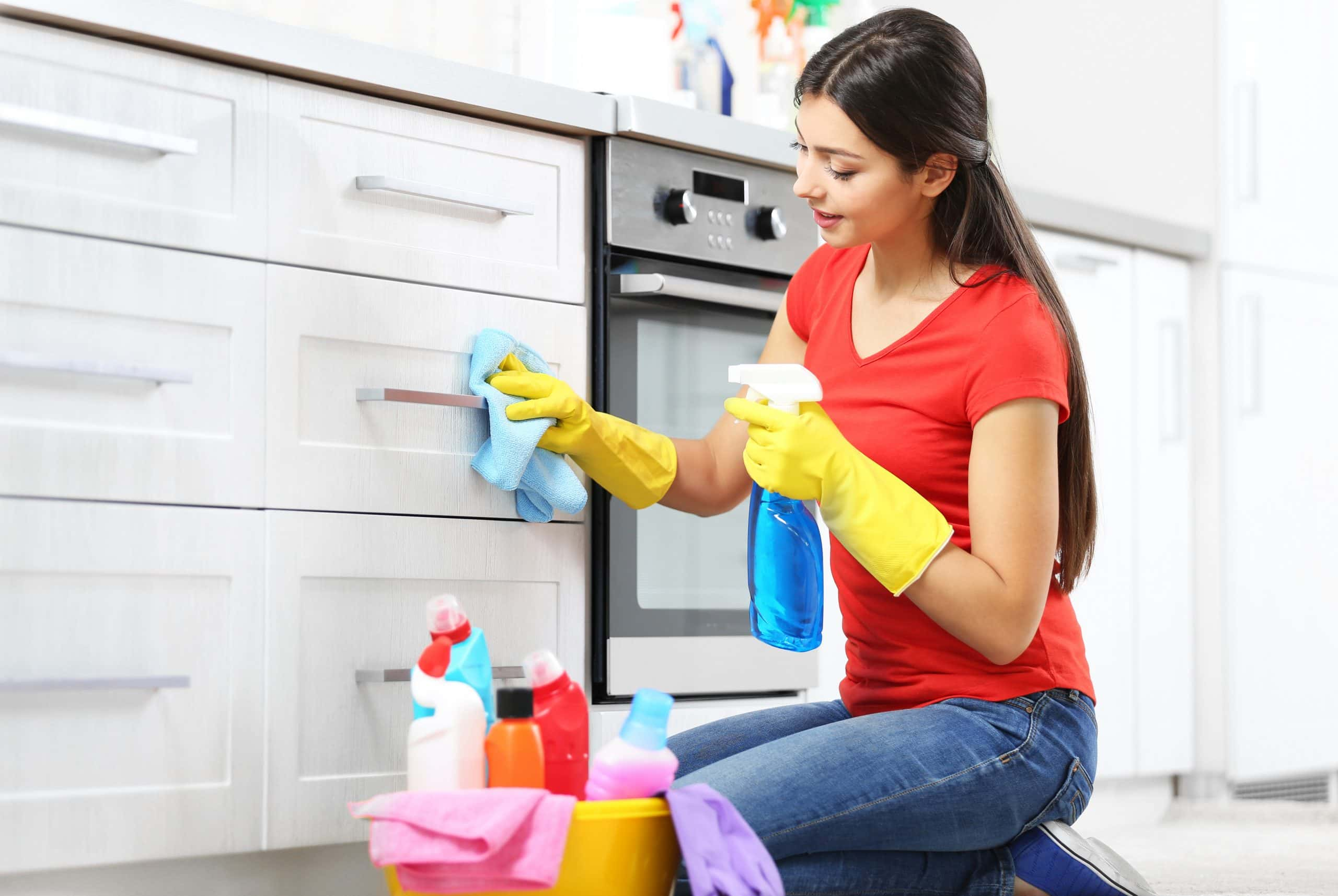
Wipe your sink or washbasin at the end of your kitchen deep cleaning. It’s ideal to use a combination of bleach and warm water. Others also opt for limescale liquid. Leave the solution on for a minute before you wipe it for the best results.
In the end, sweep and mop your floor with any diluted floor cleaner. Assign this as the last step when you deep clean your kitchen.

These cleaning routines are also an ideal time to reorganize your kitchen. A functional kitchen ensures there is less spillage and the need for constant cleaning. If you are considering a kitchen revamp, then the various designs from HomeLane should grab your attention.
The ideal way to delay a deep clean is to regularly clean all visible surfaces after each use and use clean liquids once every week.

